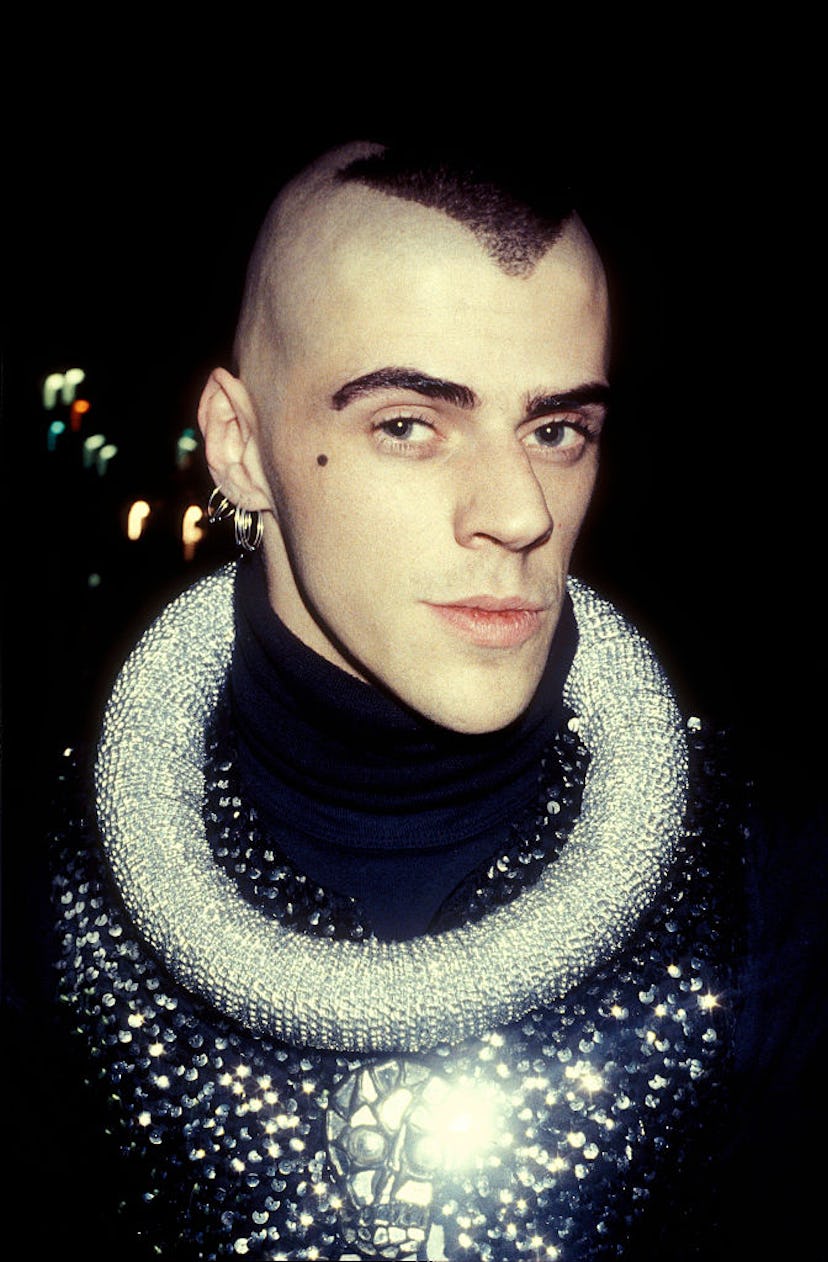Judy Blame, Punk Iconoclast, Has Died at 58
Kate Moss and Nick Knight are just some of those mourning the loss of the man who may have been the last of the real British punks.

It says something about just how influential the stylist and punk iconoclast Judy Blame, who died on Monday at age 58, became in his decades-long career that soon after he ran away from home to London at 17, punks from England to New York couldn’t remember whether the song “Judy Is a Punk” was the Ramones’ homage to him, or simply Blame’s inspiration for his chosen name. (He’d of course left his birth name far behind in his hometown of Leatherhead, Surrey, finding himself much more at home in the grimy nightclubs of London.)
It soon turned out that while in those grimy clubs, beginning to get into what he’d later call “drug rubbish,” Blame was also in fact on the job: The origins of his later work for names like Alexander McQueen and Rei Kawakubo first started in the dressing-up required for going out, which he told W upon reflecting his career was in fact “kind of like homework.” (He was in “big competition” with other burgeoning names like Boy George and Steve Strange.)
Blame was never classically trained, but he excelled at those assignments: His early ensembles showcased his expertise at hand-sewing, penchant for knickknacks like buttons, imaginative approach to everyday items like string, and knack for elevating items like safety pins, which were a staple for him from when he was 17 until his death. He may have initially used those materials and handmade his own clothing, jewelry, and accessories for lack of a budget, but it wasn’t long before that expertise turned into a decades-long career—one that involved dressing clients and friends like Neneh Cherry, Massive Attack, and Björk. (In addition, of course, to himself.)
With Nick Knight as his mentor, Blame became the go-to stylist for London’s of-the-moment magazines like The Face and i-D, working on controversial shoots tackling issues like pollution—done via making “models look like the bird being pulled out of the ocean” as if from an oil disaster—and even homelessness, which Blame attempted to tackle with John Galliano and Juergen Teller. The latter left even Blame unsettled, but it didn’t stop him from going on to work with Kawakubo and McQueen, as well as designers like Kim Jones and Gareth Pugh. (All while running the infamous Heaven club night Cha-Chas and heading up the East London collective House of Beauty and Culture—and dealing with his mother telling him radicalism was having him watched by the MI5.)
As one of the last prominent names on the scene there to remind others of the influences of his forebears, like the queer provocateur Derek Jarman and the Buffalo movement’s leader Ray Petri, Blame’s death undeniably marks the end of an era; even when he was alive, he was, after all, referred to as the last of the real British punks. His influence hasn’t been lost on even Boy George, who joined those like Kate Moss who’ve so far posted their remembrances—playfully kept up the competition in his remembrance of Blame, calling him both “the stuff of fashion legend” and a “queen b—- who was arch and grand and quintessentially British.”
Related: Stylist and Punk Iconoclast Judy Blame Looks Back on His Genre-Defying Career